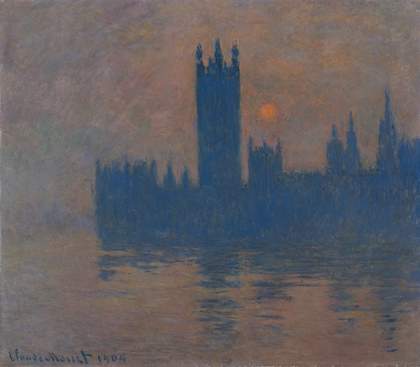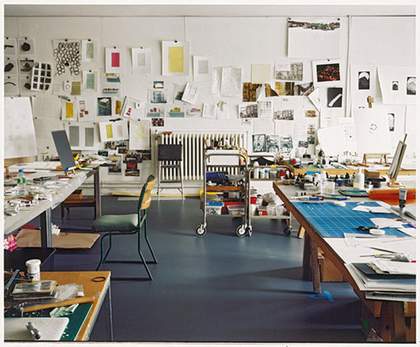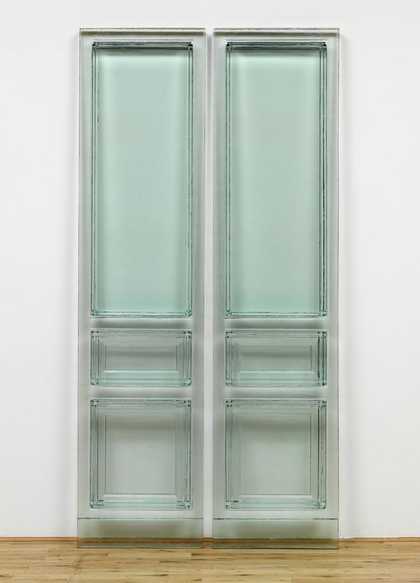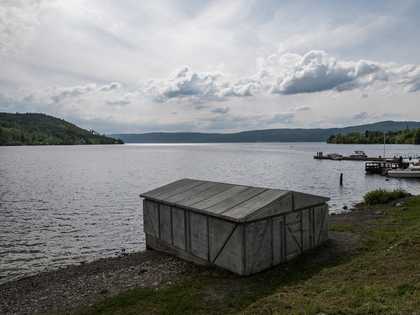
Rachel Whiteread's The Gran Boathouse 2010, a cast in concrete of the interior of a boathouse on Randsfjorden's lakeshore, Røykenvik
photo © André Løyning/Skulpturstopp
I have lived and worked in Røykenvik my whole life, on a farm that has been in my family since the 18th century. I was running a café here when Rachel Whiteread came with her English workers to make the The Gran Boathouse. I talked to her several times and the team all spent time in my café, using the water and electricity supply in the making of the sculpture.
The original boathouse here was from the 1960s. There used to be many boathouses, all built without permission. One day someone from the council discovered them and decided to take them down, but one person thought this particular structure, for some reason, was quite a nice-looking house and left it to tell the story of the area. So that saved the object for Rachel Whiteread.
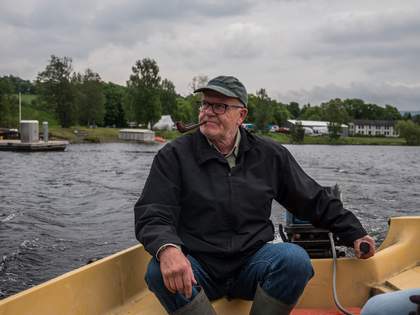
Lars Hvinden in his boat on Randsfjorden, Røykenvik
photo © André Løyning/Skulpturstopp
I’ve built many things out of concrete myself, but never something like this. The process of making it was very complicated, and you can see how accurate the impression is. Every millimetre of the inside of the house has been captured. Concrete flows – it goes everywhere you don’t want it to – so to make the concrete fill all of the small hollows so perfectly is very special, and she must have worked hard to find a method to be able to do this.
From the beginning I thought the sculpture was very interesting, because it challenged me to think differently about something I thought I knew so well. A while ago I heard a professor of mathematics talking on the radio, saying that you know nothing about a thing until you know its opposite. I wrote this down and thought about it a lot. I think this is one way to penetrate the mystery of the house: thinking about it as if it were a study of the opposite of what we know of a structure.
‘If Hans Christian Andersen were to write a story about the boathouse, he would make it speak’
Since then I’ve been trying to work out what the house is telling me. There is a very long history of people using this lake. Before the train line from Oslo to Bergen was built in 1909 people didn’t travel along the coast as it was windy, rocky and dangerous – there were pirates and no weather forecast. The main link between one side of the country and the other was the water – the inland lakes and rivers. So you see, the history of Norway is the history of people’s connection to the water, and when I think of Rachel Whiteread’s sculpture I am reminded of this history.
If Hans Christian Andersen were to write a story about the boathouse, he would make it speak to say what it has been through all these years, to show the memory and the mind of the building. I think the sculpture brings the boathouse to life and tells the story of all the boats that have been here, and so describes the history of the people that have been here too.

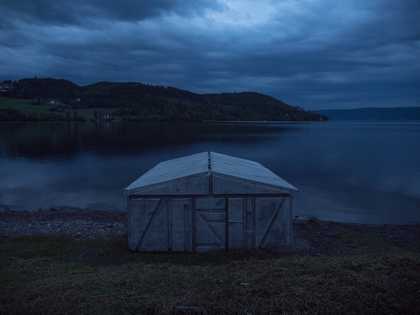
Two views of Rachel Whiteread's The Gran Boathouse 2010
photo © André Løyning/Skulpturstopp
Rachel Whiteread is at Tate Britain, 12 September – 21 January 2018.
Lars Hvinden talked to Aaron Juneau, Assistant Editor, Tate Etc. Photography by André Løyning. Norwegian coordinator: Kulturbyrået Mesén/Sparebankstiftelsen DNB.

